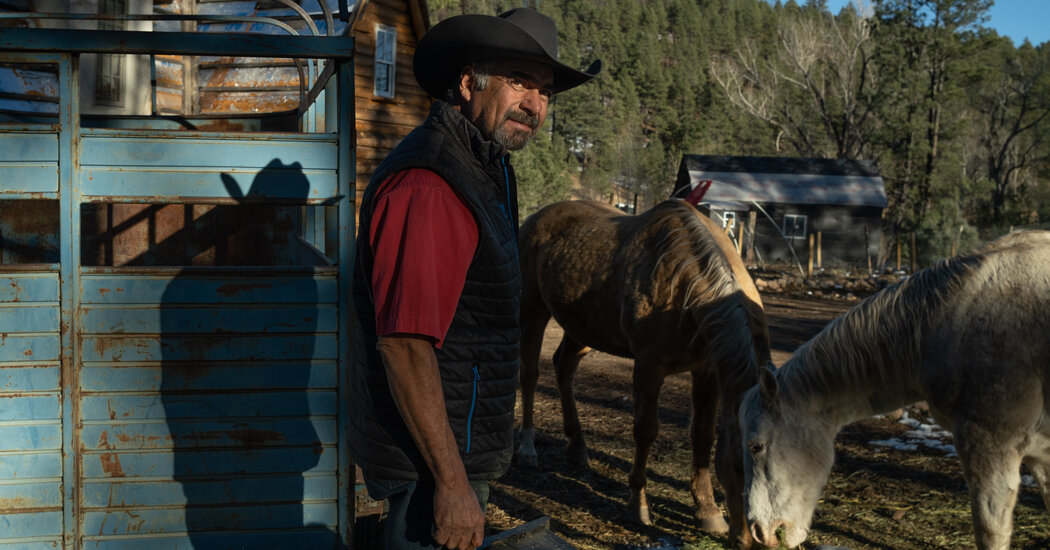The fires in Hermit’s Peak and Calf Canyon started in April, after the US Forest Service conducted a supposedly controlled blaze to thin the dense undergrowth. High winds whipped both fires into a mega-complex that eventually burned 342,000 acres in three provinces and was not fully contained until mid-August.
Then came the flood. With no trees to hold back the mountains, the monsoon season caused rivers of sediment to flow down the gullies, over roads and onto the houses below. Irrigation canals are filled with dirt and stones, but there is no point in dredging them until the deluge stops.
Michael Maes’ house in Mora, an Edenic valley town a few ravines away from Mr. Ulibarri’s house, is right in the path of this water. At one point, it came up to his waist, and even after cleaning up all the mud, he had to scramble repeatedly to direct fresh floodwaters around the building instead of through it. Meanwhile, the water pressure has remained low, so he had to carry buckets to flush the toilets.
“We are hit again and again,” said Mr. Maes. All that work kept him from his day job, cutting hair about 40 minutes down the valley, and drained his savings. Every time the sky darkens, he keeps in touch with friends through a text message chain, fearing the wreckage that follows. “Suddenly a cloud comes over,” he said, and the question is, “Who’s going to make it today?”
As the US Forest Service took responsibility for the fire, it is footing the bill for reconstruction and is compensating those who suffered financial losses with a $2.5 billion relief package. Ultimately, if people can prove their claims – a complicated undertaking in a place where property ownership is often not fully documented – they should be reinstated. Meanwhile, the White House is asking for $2.9 billion more, as part of a $37 billion package for victims of the year’s natural disasters across the country.
In New Mexico, the physical risk of climate change takes two forms. One is the creeping loss of wealth caused by prolonged drought, which in the Mora region had already completely dried up the system of ditches that had irrigated crops and watered livestock for generations. Catastrophic fire is an example of the other kind: a destructive event that vaporizes assets all at once.
Mora County, with a population of 4,200, has seen both. Long supported by small-scale agriculture and logging, local nonprofits had worked to develop a tourism economy. They built a social media presence and one group even spoke to movie studios attracted by the sweeping views and farms that seem straight out of the old west.

